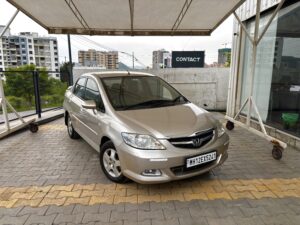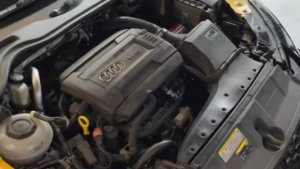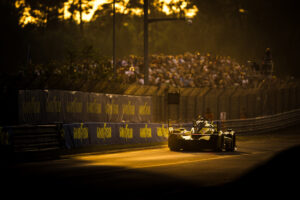
Race Concepts’ builds are usually manic characteristically, but this Zen was built with a different approach in mind. They did not want to spend much on it, so the idea this time around was to build a full-blown race car under Rs. 10 Lakh. The transmission is not a dog ’box, but a regular H-pattern built with a mix & match of OEM, after-market, custom & even in-house made parts. It end up costing them less than a third of a gearbox one would typically put in let us say an ITC car.

Zen upgrades begin usually with throwing out the 1-litre engine, replacing it either with the 1.3 from the Esteem or the 1.6 from the Baleno (1st Gen./Sedan). This particular one uses the 1298cc G13BB SOHC engine. Upgrades include forged internals, many in-house built custom parts, race-spec cylinder heads, uprated valvetrain components, aluminium underdrive pulleys, single throttle body intake, high-flow injectors, higher rated fuel pumps, uprated fuel lines & a custom fuel rail system.
What does this all mean in terms of numbers though, you may ask: Almost 190 HP at a peak of 8200 RPMs, 0-100 km/h in 5.5 sec; The car ended up clocking in the fastest time at 00:01:05, over 2 sec quicker than the previous lap record for cars.

There is also a BMC carbon-fibre airbox for better breathing, to charge more cold air into the intake. Engine management is via a Race Dynamics RD R200 ECU. A close-ratio gearbox paired to a stage 2 Exedy race-spec clutch & Cusco LSD sends power to the front wheels. The camshaft is custom ground & does not have a very aggressive cam profile; To counter that, the cylinder head has been designed to allow for more flow. It has an aluminium flywheel & custom driveshafts to handle the higher power. The engine was built to meet FMSCI Autocross regulations, so individual throttle bodies were not allowed.

The engine mounts have been fabricated in-house to meet motorsport-grade. On the safety front the chassis has been seam-welded & reinforced with an FMSCI-spec roll cage. The McPherson struts at the front have reworked uprights with custom geometry, custom lower arms, revised geometry for the rear beam axle & a custom sway bar with an in-built strut tower brace. The team also made bespoke coilover dampers. The front brakes have been upgraded to larger 245mm rotors with Nissin callipers. PCD for the wheels has been changed to 100mm to accommodate larger 15-inch Team Dynamics Motorsport rims. It runs MRF competition rubber, the front & rear arches had to be widened to accommodate the tyres.

On the weight savings front, the left door & the rear boot-lid are made of a composite material, the mouldings for which were all done in-house. There is also custom skirting down the sides & a lip at the front. On the inside, you will notice a FIA-spec Sparco seat, an OMP steering wheel, an Auto Meter tachometer & not much else. So, what did doing all this result in? A dry weight of 720 kg & at max 820 kg including the driver.

The team at Race Concepts said they could build the same Zen with wider arches, multi-link suspension at the rear, best brakes & dampers available in the market, but it would end up costing Rs. 25-30 Lakh. This ‘built-to-price’ Zen can run at almost the same pace for less than one-fourth the cost, ‘functional bits are all you need’ says the team. This little Zen is probably one of the most ingeniously made cars in the country, taking the team 70 days of work & brainstorming to build.








